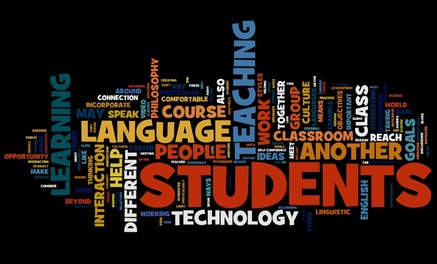Teaching Philosophy

"Learning to speak another's language means taking one's place in the human community. It means reaching out to others across cultural and linguistic boundaries. Language is far more than a system to be explained. It is our most important link to the world around us. Language is culture in motion. It is people interacting with people."
Savignon (1983, p. 187)
Sandra Savignon’s discussion of language learning brings to light the importance, necessity even, of learning languages. In order to forge connections with other people, we must stretch ourselves beyond the comfort of the native tongue. In the process of learning another language, we may begin to understand another culture, another way of thinking, and another people. Through my years of studying German and Mandarin, I have come to love the study of languages because it gives me a glimpse into another world, culture, way of thinking, and a connection to another group of people.
As a teacher, I seek to help my students make this connection through improving their linguistic and communicative abilities in English. I believe that it is important to adapt instruction to the needs and particular contexts of students in my classrooms, and I try to selectively draw from a variety of philosophies and methods to meet these different needs. Students may have different goals for taking a course, and different learning styles, such as visual, auditory, and tactile kinesthetic learners (Gardner, 1985). For this reason, I like to vary the style of my lessons, and include opportunities for people to learn in different ways (such as lecture, discussion, activities, group work, etc.)
Student participation is a vital part of my teaching philosophy. According to Vygotsky (1962, p.22),"interaction is essential to the development of individual thought." To foster interaction among students in the classroom, I often incorporate small group work and discussions, which give more students the opportunity to speak and can be particularly beneficial to students who are more reluctant to speak in front of the class. Students who work together also have the opportunity to learn from each other. Working together allows for an exchange of ideas and perspectives. In addition, through interaction with one another, more capable students can provide scaffolding to those who are weaker, helping these students to improve.
Through the group work and variation in my classes, I hope to create a relaxed atmosphere in the classroom, where students can express ideas freely and develop their self-confidence as English speakers. Additionally, I hope that through these techniques students will find the course interesting and exciting. When students are more interested in a course, they are also more likely to be motivated to reach their learning goals. In the end, my goal in teaching is to help students to reach their language learning goals (and beyond!)
When possible, I like to incorporate technology into the classroom to help meet my teaching objectives. There is a wide variety of types of technology that can be used in teaching ESL, which is important to meeting my goal of shaping material to fit a particular class. Online journals or blogs, for example, may be made public if students are comfortable with their classmates viewing their work, or they may be made private if a class is less comfortable with sharing their ideas. Different types of technology can also foster interaction outside of the classroom. Students might interact by working on a video together, or creating a wiki or google doc as a class, for example. Finally, technology can help make a language course interesting for students. Students tend to respond well to video clips, audio files, and other technology that fits into the course. These are just a few of the many different ways to use technology to help students reach their goals, and for me to meet my teaching objectives. This is my current philosophy of teaching, but I anticipate that my philosophy will shift and adapt as I gain more experience teaching English as a Second Language.
References
Gardner, H. (1985). Frames of mind: the theory of multiple intelligences. New York City, NY: Basic Books, Inc..
Savignon, S. (1983). Communicative competence: theory and classroom practice. Reading, MA: Addison Wesley.
Vygotsky, L. (1962). Thought and language. In A. Nielson, Critical thinking and reading: empowering learners to think and act. Illinois: The National Council of Teachers of English.
